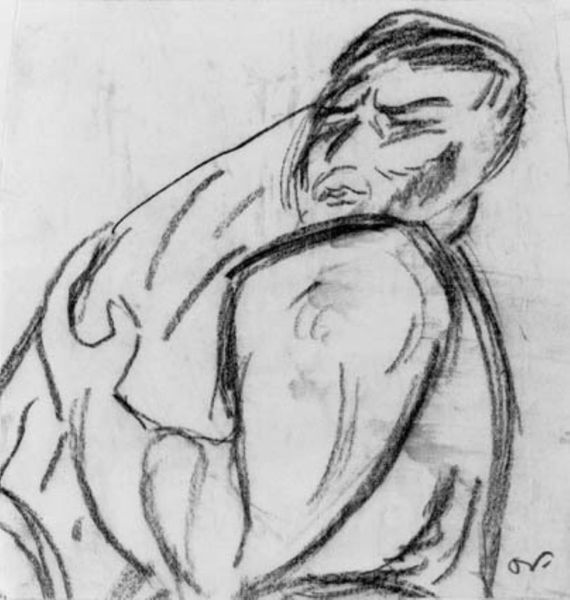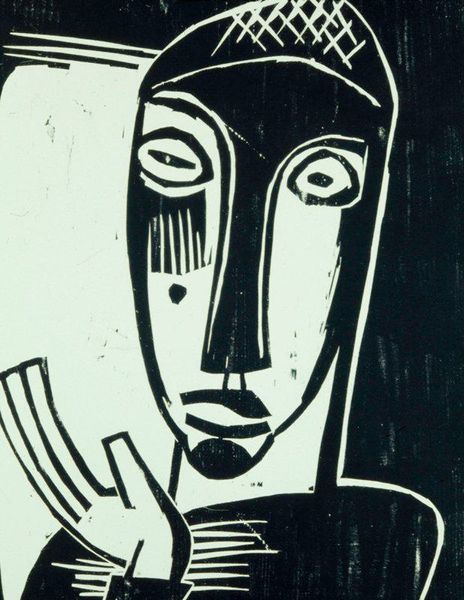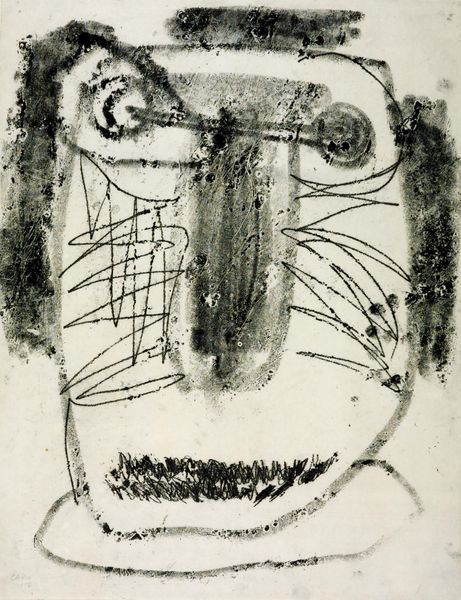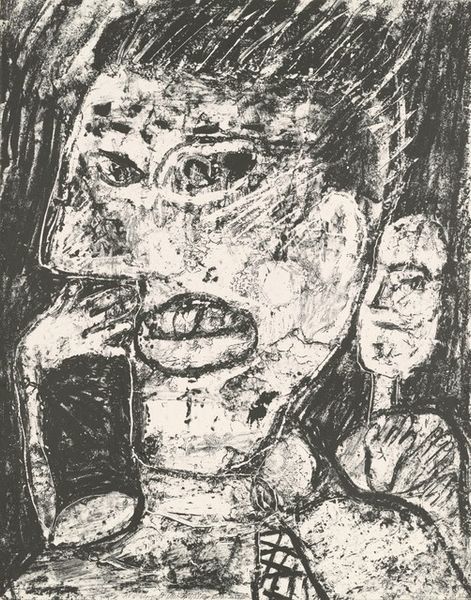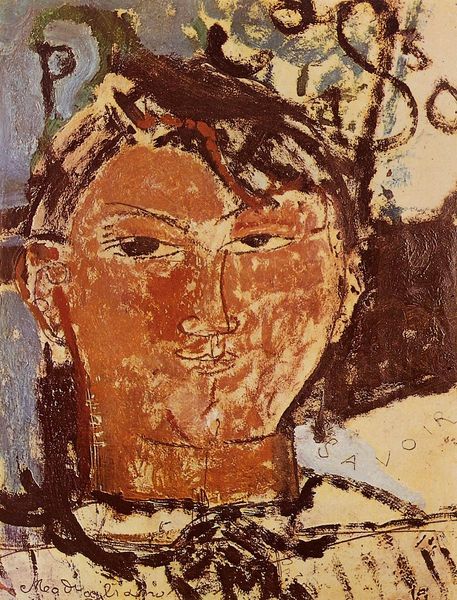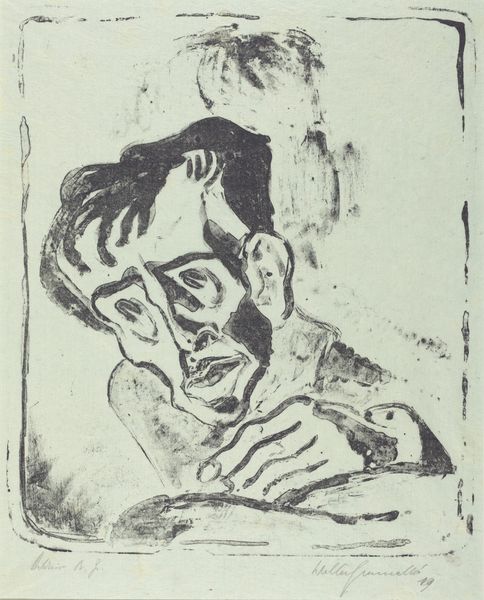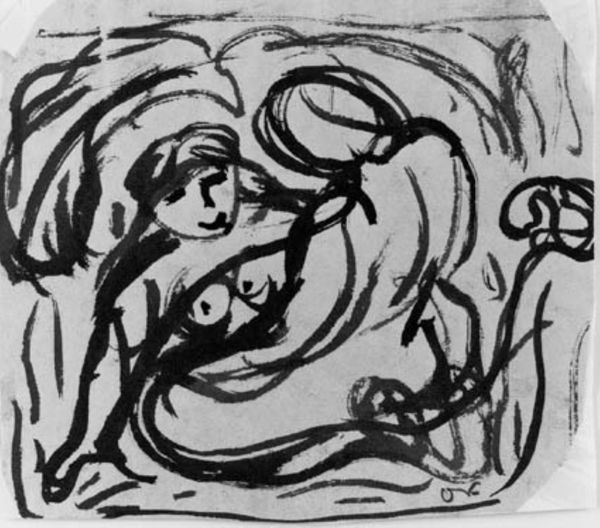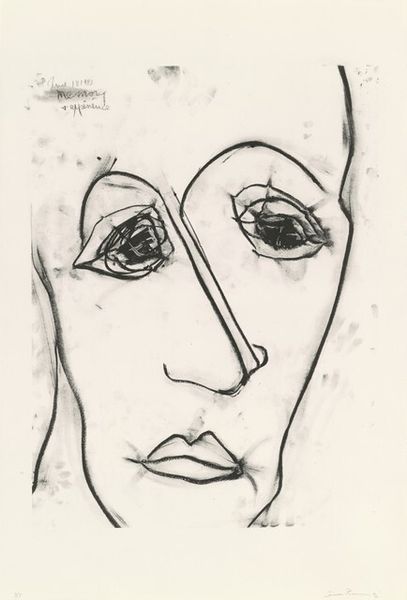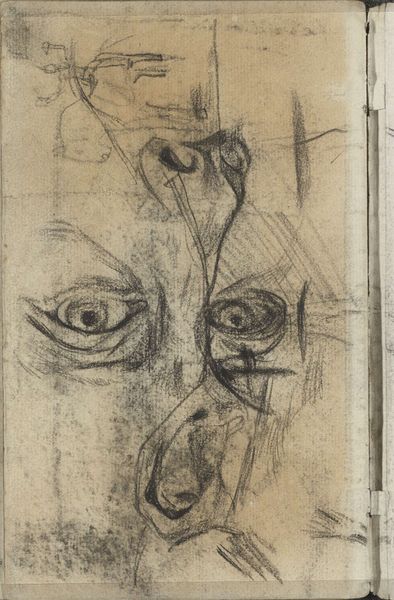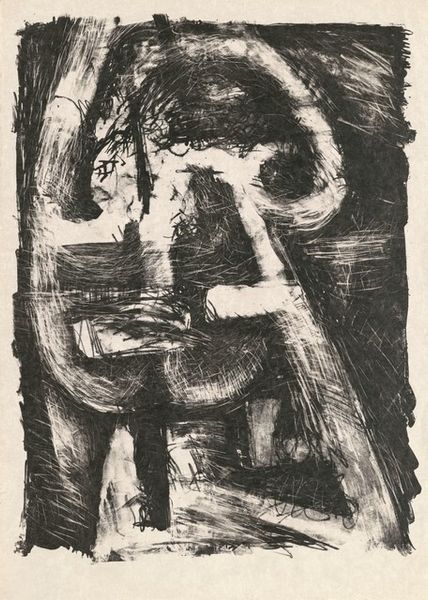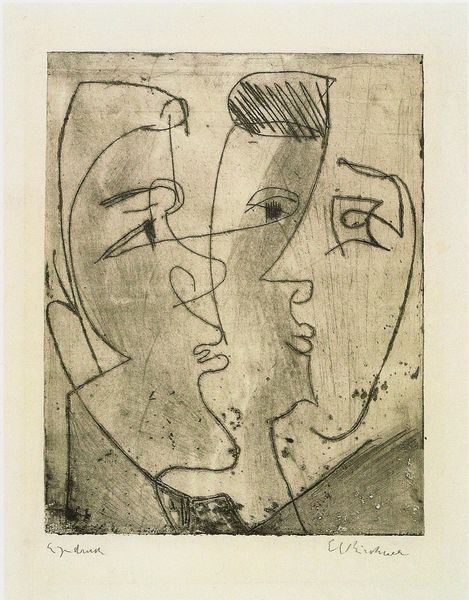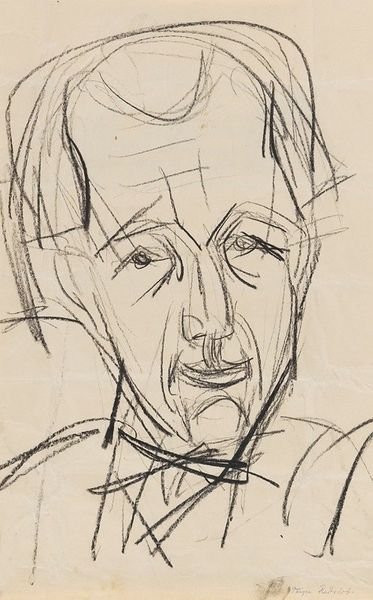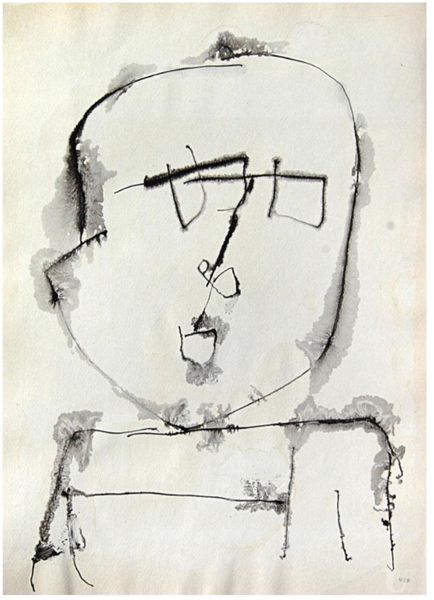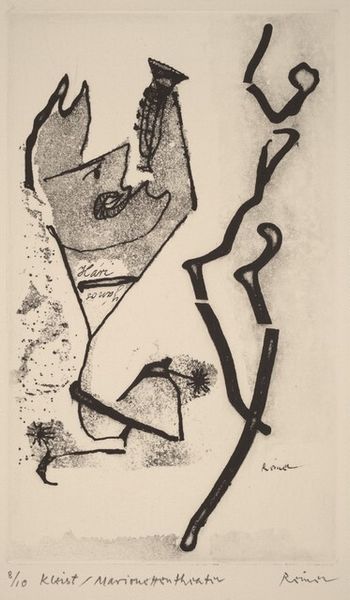
drawing, graphite, charcoal
#
portrait
#
drawing
#
self-portrait
#
expressionism
#
graphite
#
portrait drawing
#
charcoal
Dimensions: 112 mm (height) x 31 mm (width) (bladmaal)
Curator: This intriguing piece before us is titled "Hovedet af en klovn (?)" created between 1908 and 1909 by Othon Friesz, currently held at the SMK, Statens Museum for Kunst. It’s executed with graphite and charcoal, exhibiting his expressive style. What’s your initial read on it? Editor: My first thought goes straight to the distorted features and almost unnerving direct gaze. The raw charcoal lines give it a potent, visceral feel, like peering into the clown's fragmented psyche rather than just observing their appearance. Curator: I think you have something. At this time, Expressionism had come into full force in Germany. This was a critical period where we begin to see not only self portraits with the masks of a clown or actor, but in pieces that allow you to consider the psychology of entertainment, and those within it. Editor: Absolutely, that visual fragmentation aligns strongly with the traditional symbolism of the clown archetype. A fractured self, playing out emotions that the conventional persona might keep hidden. Are there certain symbols beyond the figure himself that we can derive more contextual meaning? Curator: Very few here. Most critics agree Friesz had a tendency toward dramatic, spontaneous renderings, emphasizing subjective emotion over precise accuracy. Here the cultural symbols come directly from performance - and in making the piece look undone or spontaneously performed in charcoal and graphite we may understand Friesz also took on the characteristics of "performer". Editor: It certainly speaks to the broader existential angst explored within that movement, portraying not merely a likeness but the underlying turmoil of human consciousness. I am particularly struck with how even such quick movements feel deeply representative and carry with them significant weight beyond their spontaneous appearance. Curator: I think in conclusion, this expressionistic self-portrait drawing encapsulates the early 20th-century mood, where artistic explorations delved deeper into portraying emotional depth and subjectivity above strict pictorial representation, challenging traditional norms and inviting viewers into this new age of raw personal experience through imagery. Editor: Precisely. This potent, simple drawing encourages us to reflect upon the complex nature of self and performance, reflecting just how powerful symbolism in its barest forms can impact broader understandings about history, identity and even trauma.
Comments
No comments
Be the first to comment and join the conversation on the ultimate creative platform.
